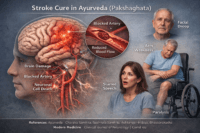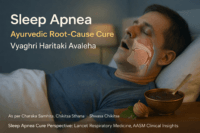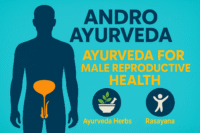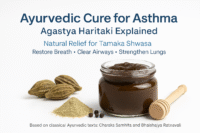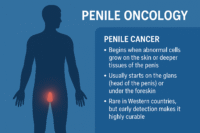- Modern Physiology of Male Vitality
- Hidden Modern Causes of Stamina Loss
- Ayurvedic Interpretation-Dosha-Based Understanding
- Clinical Diagnostics (Ayurvedic + Modern Integration)
- Rasayana and Vajikarana Therapy
- The Core Formula-Shukra Vardhak Avaleha (30-Day Course)
- Personalized Therapy (Prakriti-Based Customization)
- Case Study
- Frequently Asked Questions
- References
The Ayurvedic cure for stamina begins with understanding how modern lifestyle drains Ojas and Shukra Dhatu plays role .Across the world, a quiet yet alarming shift is unfolding men are losing their vitality, confidence, and stamina at an unprecedented rate. What was once attributed to aging alone has now become a reality even for men in their twenties and thirties. This is not merely a private struggle but a global health crisis that affects physical strength, emotional balance, and intimate relationships alike [112].
Over the past four decades, scientific analyses have revealed a 40–60% decline in testosterone among men under 40, alongside rising cases of fatigue, infertility, and depressive symptoms [87]. Endocrinologists now describe this as a silent pandemic of hypogonadism driven by chronic stress, environmental toxins, and poor sleep [64]. At the same time, infertility and stress-induced sexual dysfunction have nearly doubled since the 2000s, reflecting the combined impact of psychological burnout, endocrine disruption, and lifestyle degeneration [119].
Modern society has reduced masculinity to performance, appearance, and comparison. Digital overstimulation and pornography distort natural arousal, causing dopamine exhaustion and emotional numbness [93]. Yet in Ayurveda, true virility (Vajikarana) is defined not by muscular display but by the harmony of Agni (metabolic fire), Ojas (vital essence), and Shukra Dhatu (reproductive tissue) the triad that sustains both physical and spiritual vigor [12].
Stamina, therefore, is not just muscular strength; it is a neuro-hormonal and emotional synergy. Where biomedicine measures testosterone and cortisol, Ayurveda recognizes their reflection through Prana and Ojas the inner vitality that governs patience, immunity, and confidence [33]. When Ojas depletes, fatigue and emotional instability soon follow, and self-esteem diminishes.
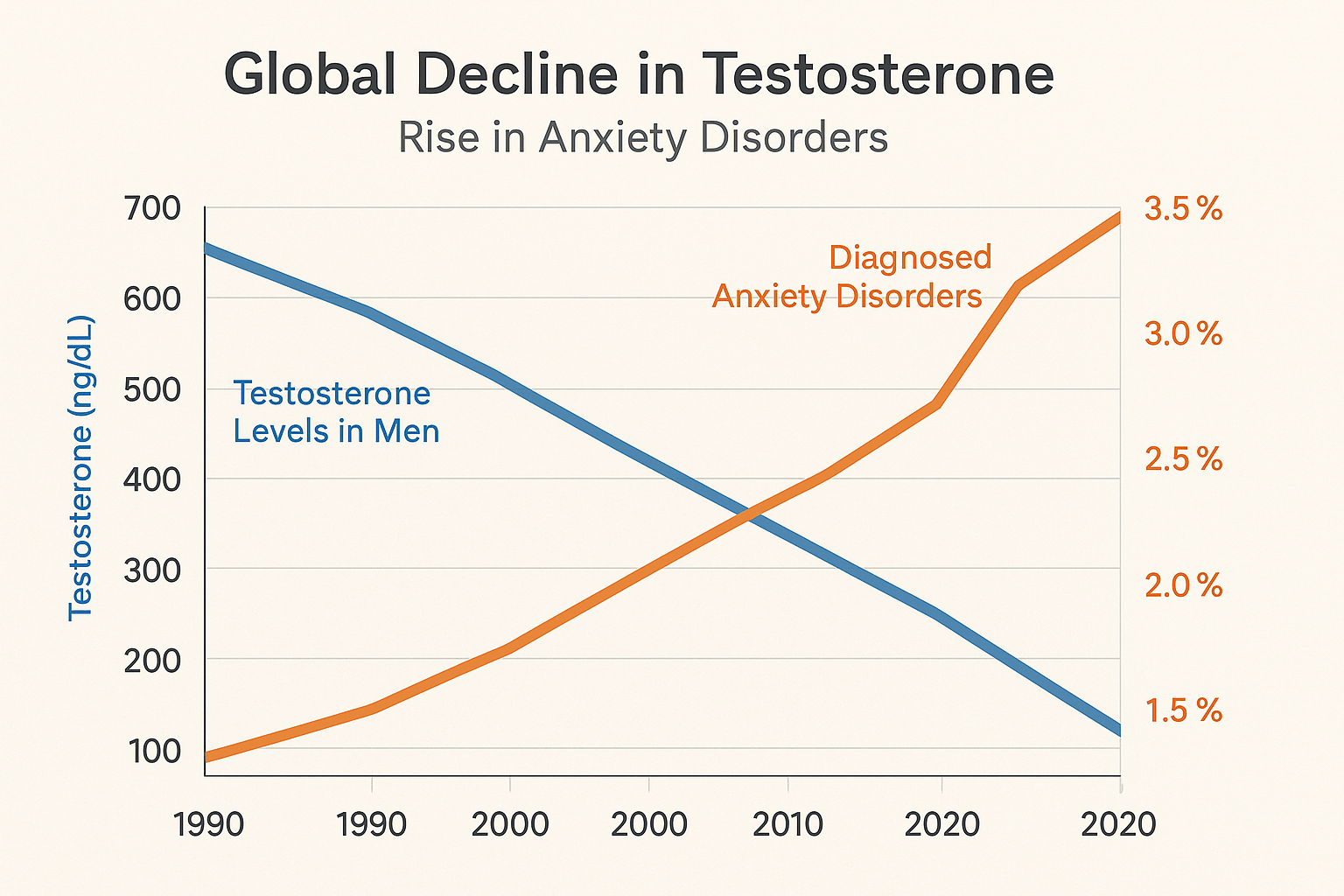
Fortunately, this decline is reversible. Ayurveda provides a complete blueprint for rejuvenation (Rasayana) and restoration of masculine energy by addressing the root not merely the symptoms of hormonal, emotional, and spiritual fatigue [58]. This article seeks to guide men toward healing, not manipulation; to bridge the truth of modern endocrinology with the timeless science of Vajikarana.
Modern Physiology of Male Vitality
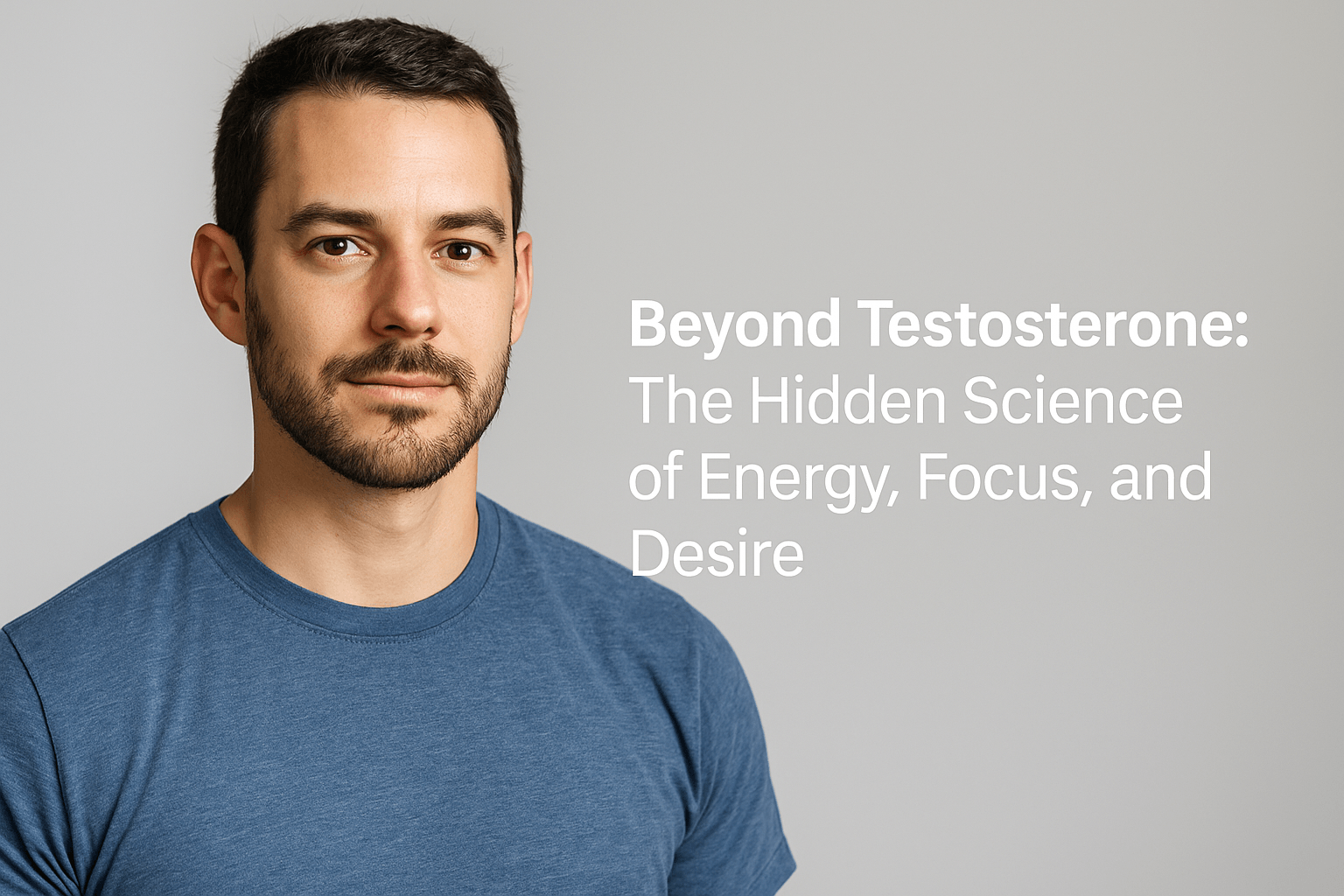
Male vitality is not merely a function of muscle mass or testosterone levels; it is the integrated performance of the neuroendocrine, vascular, and metabolic systems, all of which determine energy, libido, confidence, and emotional stability [33]. Understanding this foundation is crucial before exploring how Ayurveda explains the same through Shukra Dhatu and Ojas.
Hormonal Foundations
At the center of male vitality lies the hypothalamic–pituitary–gonadal (HPG) axis, a delicate feedback loop that governs testosterone production, sexual desire, and overall stamina. The hypothalamus releases gonadotropin-releasing hormone (GnRH), which stimulates the pituitary gland to secrete luteinizing hormone (LH) and follicle-stimulating hormone (FSH). LH then acts on Leydig cells in the testes to produce testosterone, the key hormone responsible for strength, motivation, and libido [64].
When this axis is balanced, men experience steady energy, healthy muscle tone, and emotional confidence. However, chronic stress, sleep deprivation, and poor nutrition elevate cortisol, which directly suppresses GnRH release, leading to lower LH secretion and reduced testosterone synthesis [58]. The result is fatigue, diminished sexual drive, mood fluctuations, and anxiety.
Ayurveda parallels this decline to Shukra Kshaya — depletion of reproductive essence — which ultimately weakens Ojas, the essence of immunity and endurance [12]. Thus, both modern physiology and classical Ayurveda converge on a single truth: vitality depends on hormonal harmony and emotional stability.
Neurochemical Triad of Desire, Focus, and Energy
Modern neuroscience identifies three primary neurotransmitters as the drivers of male vitality:
- Dopamine: Governs motivation, pleasure, and sexual initiation.
- Serotonin: Regulates mood, satisfaction, and post-ejaculatory calm.
- Acetylcholine: Supports focus, memory, and muscular coordination during arousal [93].
In healthy men, these neurotransmitters work in rhythm to sustain both physical and psychological vigor. However, overstimulation from pornography, chronic stress, or excessive digital exposure causes dopamine receptor fatigue, leading to apathy, anxiety, and poor sexual performance [112].
Ayurveda describes this same dysfunction as Manovaha Srotas Dushti (derangement of mental pathways) and Indriya Ativyapara (overuse of sensory organs), both of which drain Shukra and disturb mental clarity [87]. Hence, restoring the neurochemical balance through herbs like Kapikacchu (dopamine modulator) and Brahmi (serotonin stabilizer) becomes central to recovery.
Vascular and Metabolic Integrity
Erection and endurance are vascular events governed by nitric oxide (NO) — a gaseous signaling molecule produced by endothelial cells that relaxes blood vessels and improves oxygenation. Adequate NO ensures smooth blood flow to penile tissue, sustaining erection and stamina [119]. However, poor diet, high cholesterol, and insulin resistance impair endothelial function, reducing NO production and causing vascular fatigue [58].
Ayurveda recognizes this as Srotorodha (channel obstruction) and Medo Dushti (metabolic congestion), both of which block the free flow of Prana and Shukra. Herbs such as Gokshura, Pippali, and Trivanga Bhasma act as natural vasodilators and metabolic regulators, restoring blood vessel tone and vitality [33].
Integrative Understanding
In synthesis, male vitality results from three parallel networks:
- HPG Axis (Hormonal Regulation) – governing testosterone and reproductive energy.
- Neurochemical Triad (Mental Regulation) – balancing dopamine, serotonin, and acetylcholine.
- Endothelial System (Vascular Regulation) – ensuring blood flow, oxygenation, and endurance.
When these systems operate in sync, a man experiences sustained stamina, emotional stability, and sexual confidence. When disrupted, he feels fatigue, loss of drive, and insecurity conditions that Ayurveda identifies as Ojas depletion and Shukra imbalance. The integration of both sciences points toward a holistic restoration: one that heals the brain, hormones, and circulation together, not separately.
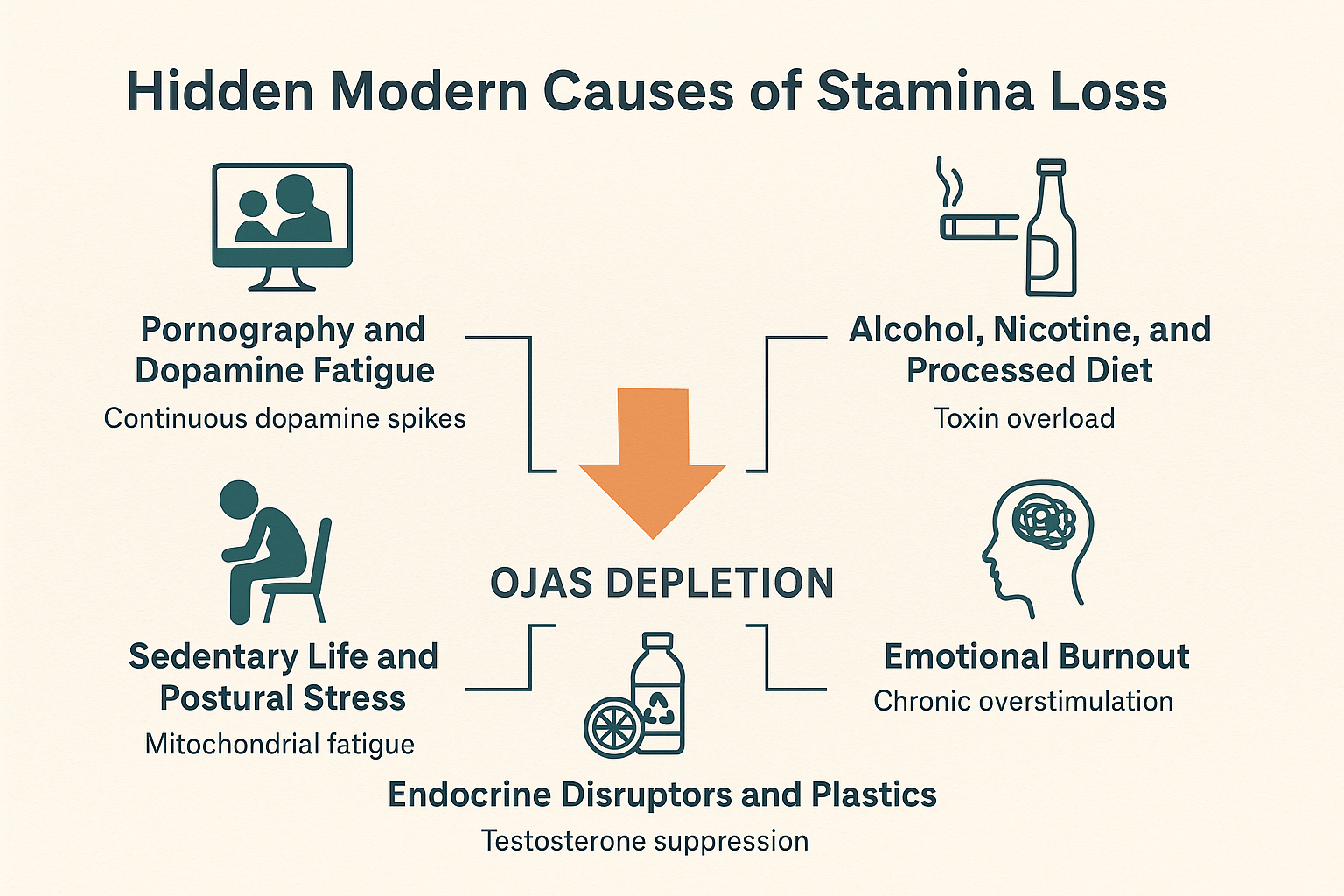
While modern medicine often blames age or hormones for reduced stamina, the true causes lie much deeper in lifestyle, neurochemistry, and emotional patterns. The modern man’s environment continuously overstimulates his senses while simultaneously depleting his nervous and endocrine systems. Ayurveda recognizes these same forces as Shukra Kshaya (reproductive depletion) and Ojas Hani (loss of vital essence). Below are five major yet often overlooked causes of stamina loss, examined through both modern physiology and Ayurvedic insight.
1. Pornography and Dopamine Fatigue
The brain’s reward system thrives on novelty and anticipation. Repeated exposure to explicit visual stimulation triggers continuous dopamine spikes, flooding the limbic system with artificial pleasure signals. Over time, this causes dopamine receptor downregulation, a neurochemical desensitization that leaves the brain unresponsive to real-life intimacy [93].
The consequences extend beyond sexual health — men experience apathy, anxiety, lack of motivation, and loss of delayed gratification. This state mirrors the Ayurvedic concept of Indriya Ativyapara, meaning overindulgence of sensory organs, which directly depletes Shukra Dhatu, the reproductive essence [87]. When sensory control weakens, energy dissipates through uncontrolled desire, leading to fatigue and low confidence.
Modern neuroscience confirms this link: dopamine depletion reduces testosterone secretion through its inhibitory effect on the hypothalamic GnRH pulse, creating a physiological parallel to Shukra Kshaya [64].
2. Sedentary Life and Postural Stress
Physical inactivity is now considered a silent killer. Prolonged sitting and lack of muscular engagement reduce blood circulation, limit oxygen delivery to tissues, and impair mitochondrial energy production [112]. Over time, this leads to mitochondrial fatigue, low ATP generation, and overall metabolic stagnation.
Ayurveda equates this to Vata aggravation resulting from instability, dryness, and lack of grounding. When Vata predominates, men experience restlessness, premature exhaustion, and anxiety. The result is a body that cannot channel energy efficiently, regardless of testosterone levels.
Poor posture, particularly forward pelvic tilt and spinal stiffness, compresses the lower abdominal region, affecting both Apana Vayu (responsible for reproductive functions) and Shukra Dhatu circulation [33]. This explains why many modern men feel physically weak even when lab values appear normal.
3. Alcohol, Nicotine, and Processed Diet
Alcohol suppresses GnRH (Gonadotropin-Releasing Hormone) and reduces Leydig cell function, leading to smaller testicular volume and decreased testosterone synthesis [58]. Nicotine causes vasoconstriction, reducing nitric oxide and impairing endothelial function, which directly affects erection quality and stamina [119].
Meanwhile, processed and refined foods loaded with trans fats and additives increase oxidative stress, clog arteries, and reduce mitochondrial function. Ayurveda classifies these toxins as Ama, a sticky metabolic residue that obstructs subtle energy pathways, leading to Srotorodha (blocked channels) [12].
As Ama accumulates, Prana (life energy) and Shukra fail to flow properly, resulting in sluggishness, poor endurance, and dull libido. The natural remedy lies in cleansing the Srotas through fasting, herbal detox, and Rasayana rejuvenation — restoring metabolic clarity and oxygen flow.
4. Endocrine Disruptors and Plastics
A hidden yet profound threat comes from xenoestrogens — synthetic chemicals found in plastics (BPA, phthalates), pesticides, and personal care products. These compounds mimic estrogen, binding to androgen receptors and suppressing natural testosterone production [64].
Over time, they lead to feminization, low sperm count, and hormonal chaos even in young men. Research links prenatal and adult BPA exposure to decreased testicular size and impaired sperm motility [119].
Ayurveda identifies this as Beeja Dushti, or germinal tissue defect — when the purity of reproductive essence (Shukra) is disturbed due to chemical, dietary, or emotional impurities [33]. Chronic exposure to endocrine disruptors disrupts both physical and subtle energies, manifesting as infertility, lethargy, and loss of sexual vigor.
5. Emotional Burnout
Modern living has created a paradox: overconnection without inner connection. The constant bombardment of screens, notifications, and social comparisons overstimulates the brain’s amygdala, leading to dopamine fatigue and low serotonin tone [93]. This manifests as anxiety, insomnia, irritability, and emotional numbness — signs of nervous system exhaustion.
Ayurveda attributes this to disturbed Sattva, the mental clarity principle. When Sattva declines, Rajas (restlessness) and Tamas (inertia) dominate, disturbing Manovaha Srotas, the channels of the mind [87]. This weakens Ojas, resulting in chronic fatigue, poor focus, and emotional instability.
The antidote lies in daily mindfulness, sensory restraint, and rejuvenating practices that rebuild Sattva and nourish the mind. Herbs like Brahmi, Jatamansi, and Ashwagandha have proven effects on stress hormones and neural pathways, restoring both calmness and endurance [58].
Integrative Understanding
These hidden causes show that stamina loss is not merely hormonal — it is neurochemical, emotional, and spiritual. Modern physiology identifies dopamine and nitric oxide depletion, while Ayurveda reveals deeper roots in Shukra depletion, Ama buildup, and disturbed Sattva. Healing requires addressing all dimensions simultaneously — cleansing the channels, calming the mind, and rebuilding reproductive and mental vitality.
Ayurvedic Interpretation-Dosha-Based Understanding
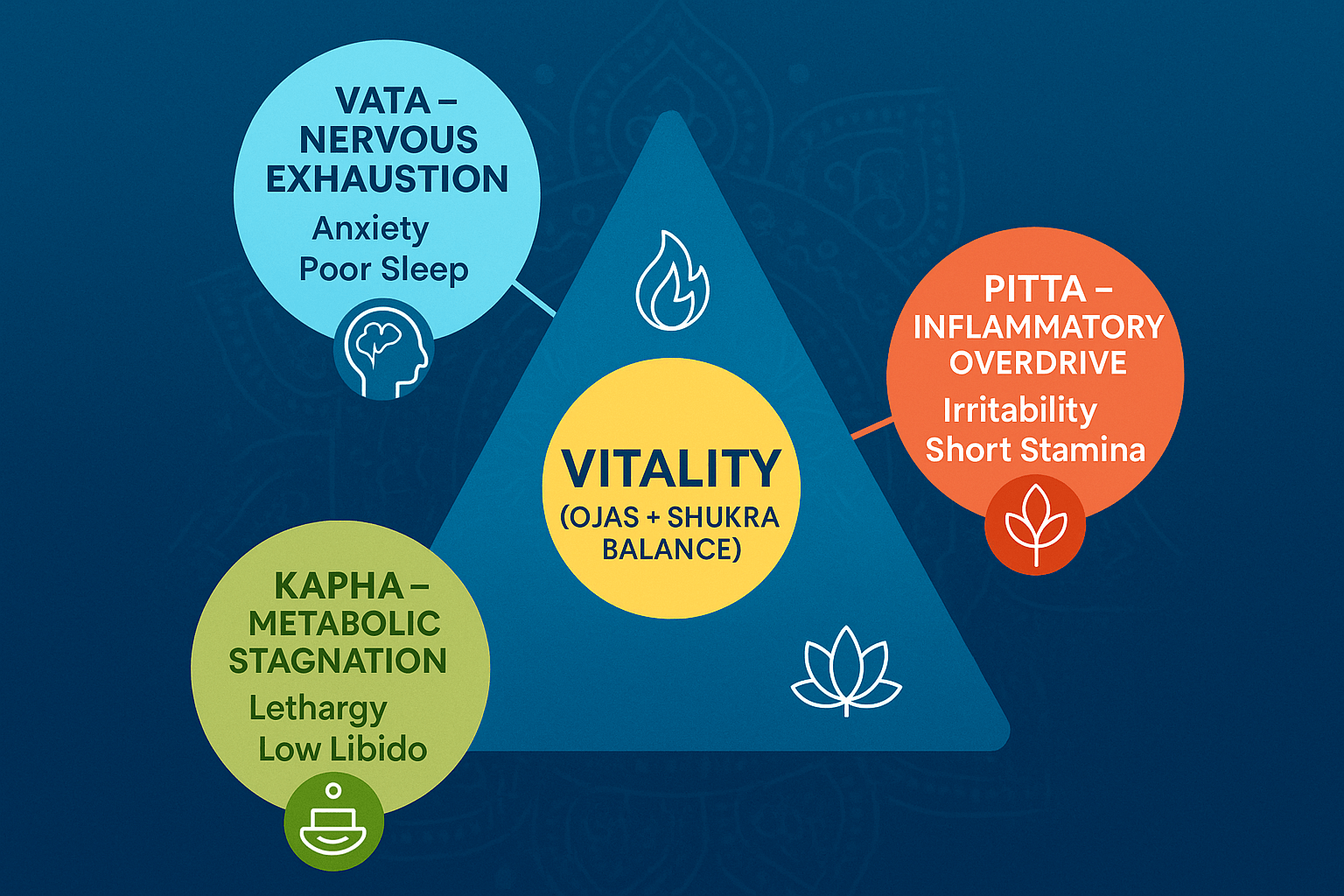
Ayurveda views male vitality not as a single hormonal phenomenon but as a synergistic expression of balanced Doshas (Vata, Pitta, and Kapha) working through the Dhatus (tissues), particularly Shukra Dhatu. When any of the three Doshas becomes imbalanced, it manifests as a distinct type of stamina loss, each with unique physical, emotional, and reproductive signs. Understanding these Dosha-specific patterns allows for precise, personalized healing rather than one-size-fits-all treatment.
Vata Imbalance – Nervous Exhaustion
Vata governs movement, nerve impulses, and sensory perception. When aggravated, it dries and depletes the body’s vital essence, leading to neuro-muscular fatigue, poor focus, and premature exhaustion. In this state, the nervous system operates in overdrive but lacks grounding.
Common Symptoms: Anxiety, premature ejaculation, low semen volume, poor sleep, restlessness, and mental hyperactivity [12]. These men often feel motivated but burned out, with fluctuating energy levels and cold extremities.
Modern Correlation: Neurotransmitter depletion, chronic stress-induced cortisol dominance, and HPG axis suppression [58].
Key Herbs:
- Ashwagandha (Withania somnifera) – adaptogenic Rasayana restoring adrenal strength and testosterone levels [33].
- Bala (Sida cordifolia) – strengthens nerves and muscles, reducing fatigue [119].
- Shilajit (Asphaltum punjabianum) – enhances mitochondrial energy and stabilizes dopamine [93].
- Kapikacchu (Mucuna pruriens) – natural L-DOPA source, increases dopamine tone and libido [87].
Corrective Therapies:
- Abhyanga (warm oil massage) using sesame or Bala Taila to calm Vata and restore neuromuscular balance.
- Diet: Warm, unctuous foods like milk, ghee, dates, and soaked almonds. Avoid dry, raw, or cold meals.
- Lifestyle: Early bedtime, grounding yoga, silence periods, and reduced digital stimulation.
Classical Reference:
“Vata prakopa causes kshaya of Shukra and Bala.” — Charaka Samhita, Chikitsa Sthana 2/46
Pitta Imbalance – Inflammatory Overdrive
Pitta governs heat, digestion, and hormonal metabolism. When elevated, it creates inflammation, irritability, and short stamina, burning through energy reserves too quickly. Men with aggravated Pitta often appear strong but tire suddenly, experiencing body heat, redness, and irritability.
Common Symptoms: Irritability, short endurance, sweating, burning sensations, and frustration after minimal effort [64]. Libido may be high but short-lived, with post-coital fatigue and mood swings.
Modern Correlation: Elevated cortisol and inflammatory cytokines, liver congestion, and oxidative stress reducing Leydig cell activity [112].
Key Herbs:
- Shatavari (Asparagus racemosus) – cooling Rasayana, nourishes Shukra Dhatu and regulates Pitta [33].
- Amalaki (Emblica officinalis) – rich in antioxidants, rejuvenates liver and sperm health [58].
- Yashtimadhu (Glycyrrhiza glabra) – adaptogen that balances cortisol and supports adrenal glands [119].
Therapies:
- Cooling Rasayana therapy using ghee-based formulations with Amalaki and Shatavari.
- Emotional Regulation: Meditation and pranayama to stabilize Sattva and reduce reactive impulses.
- Diet: Fresh fruits, cooling herbs, and elimination of alcohol, spicy food, and stimulants.
Classical Reference:
“Pitta srotas dahanam karoti; hence Shukra Kshaya follows heat imbalance.” — Sushruta Samhita, Chikitsa Sthana 27/12
Kapha Depletion – Metabolic Stagnation
Kapha provides structure, lubrication, and stability. When deficient or blocked, the body loses its metabolic fire, leading to low stamina, lethargy, and poor libido. Men dominated by Kapha depletion tend to have sluggish metabolism and diminished enthusiasm.
Common Symptoms: Lethargy, reduced desire, weight gain or heaviness, poor digestion, and loss of interest in physical intimacy [93]. Energy feels trapped rather than flowing.
Modern Correlation: Insulin resistance, sluggish circulation, reduced nitric oxide, and lipid imbalance [33].
Key Herbs:
- Gokshura (Tribulus terrestris) – enhances urinary and reproductive function, boosts testosterone [64].
- Trikatu (Black Pepper, Long Pepper, Ginger blend) – ignites metabolism and improves nutrient absorption [119].
- Vidarikand (Pueraria tuberosa) – anabolic tonic for restoring muscle and sperm quality [58].
Therapies:
- Langhana (light fasting) with warm herbal teas to clear channels and stimulate Agni.
- Udvartana (dry powder massage) to enhance lymphatic flow and reduce stagnation.
- Lifestyle: Early rising, vigorous physical activity, and exposure to morning sunlight to awaken Kapha balance.
Classical Reference:
“Kapha kshaye shramo bhavati, sthairyam cha na bhavati.” — Bhavaprakasha, Madhyama Khanda, Vajikarana Adhyaya
Integrated Ayurvedic Insight
In essence, stamina loss is the result of dosha-specific imbalances converging at the Shukra and Ojas levels.
- Vata drains through overactivity and stress.
- Pitta burns through inflammation and overexertion.
- Kapha dulls through stagnation and excess.
Only by identifying which Dosha predominates in each individual can true rejuvenation be achieved. Ayurveda thus emphasizes personalization — one formula cannot suit all men.
Clinical Diagnostics (Ayurvedic + Modern Integration)
Understanding stamina loss requires a diagnostic approach that unites both modern medical testing and Ayurvedic insight. Modern endocrinology measures the hormonal and biochemical state of the body, while Ayurveda interprets the deeper energetic and Dhatu-level (tissue-level) balance. When these two systems are analyzed together, the result is a truly holistic picture of a man’s internal strength, reproductive vitality, and emotional stability.
Modern Diagnostic Parameters
Modern laboratory tests reveal how deeply physical systems are influenced by stress, toxins, and lifestyle. The most critical indicators of male vitality are total and free testosterone levels, which determine androgenic activity, muscle strength, and libido [64]. A significant drop in testosterone signals both endocrine exhaustion and Shukra depletion.
Prolactin is another essential hormone; when it rises abnormally, it suppresses GnRH (gonadotropin-releasing hormone) and reduces testosterone production, leading to low stamina and poor sexual performance [112]. A thyroid profile, which includes TSH, T3, and T4, reveals the metabolic rhythm. An underactive thyroid mirrors the Ayurvedic state of weak Agni — the digestive and metabolic fire — leading to sluggishness and emotional dullness [33].
Other modern tests such as lipid profile and HbA1c reflect cardiovascular and metabolic efficiency. Elevated cholesterol or insulin resistance often accompany poor circulation and nitric oxide imbalance, both of which cause fatigue and erectile weakness [58]. Cortisol and DHEA levels also provide vital clues. High cortisol combined with low DHEA indicates chronic stress, suppressed testosterone, and energy burnout [93].
When these findings are reviewed together, they tell a clear story: low testosterone corresponds to Shukra Kshaya (depletion of reproductive tissue), high cortisol represents Ojas Kshaya (loss of vital essence), and emotional anxiety reflects Vata aggravation — all three forming the foundation of stamina loss.
Ayurvedic Diagnostic Framework
Ayurveda investigates the same condition through entirely different but deeply intuitive methods. The physician begins with Nadi Pariksha (pulse diagnosis), where the rhythmic quality of the pulse reveals doshic disturbances. A fast, erratic pulse indicates Vata aggravation, while a soft or faint pulse shows depletion of Shukra and Ojas [12].
Next comes Dhatu Pariksha, the evaluation of tissue strength and vitality. The physician observes the patient’s skin tone, luster, strength, and speech to assess the condition of the seven Dhatus. Shukra Dhatu, being the final refinement of all others, reflects overall vitality and reproductive potential.
Agni Pariksha, or assessment of digestive fire, determines whether food is being transformed into healthy Dhatus. A weak Agni leads to Ama (toxic residue), which blocks the Srotas (microchannels) and reduces nourishment reaching the reproductive tissues. Ayurveda also considers Manas Pariksha, the mental state, since stress and fear directly disturb Prana (life force) and cause premature exhaustion [87].
Classical texts emphasize that true diagnosis must extend beyond the physical. Charaka states, “Shukra is the essence of all Dhatus; its depletion reflects throughout the body and mind.” (Charaka Samhita, Chikitsa Sthana 2/46).
Integrative Diagnostic Mapping
When both sciences are combined, an intricate harmony emerges. A man presenting with low testosterone, anxiety, and fatigue may be labeled by modern science as hormonally imbalanced, yet Ayurveda perceives this same pattern as Shukra Kshaya with Vata Prakopa. Similarly, chronic stress with high cortisol levels corresponds to Ojas Kshaya, the loss of spiritual and emotional stamina. Metabolic disorders such as obesity or high triglycerides indicate Medo Dushti and Srotorodha, meaning blocked channels and stagnation of energy.
Each physical symptom, therefore, mirrors a deeper Dhatu-level depletion. A physician who understands both frameworks can recognize that a biochemical deficiency is not an isolated event but a manifestation of disturbed Prana, Agni, and Shukra flow. This integration allows for highly individualized therapy that restores balance, not merely laboratory normalcy.
When modern tests are read through Ayurvedic eyes, true healing begins. The goal is not to normalize numbers but to rejuvenate the essence behind them — to rebuild Ojas, purify the Srotas, and awaken Shukra, thereby restoring the man’s natural vitality.
Rasayana and Vajikarana Therapy
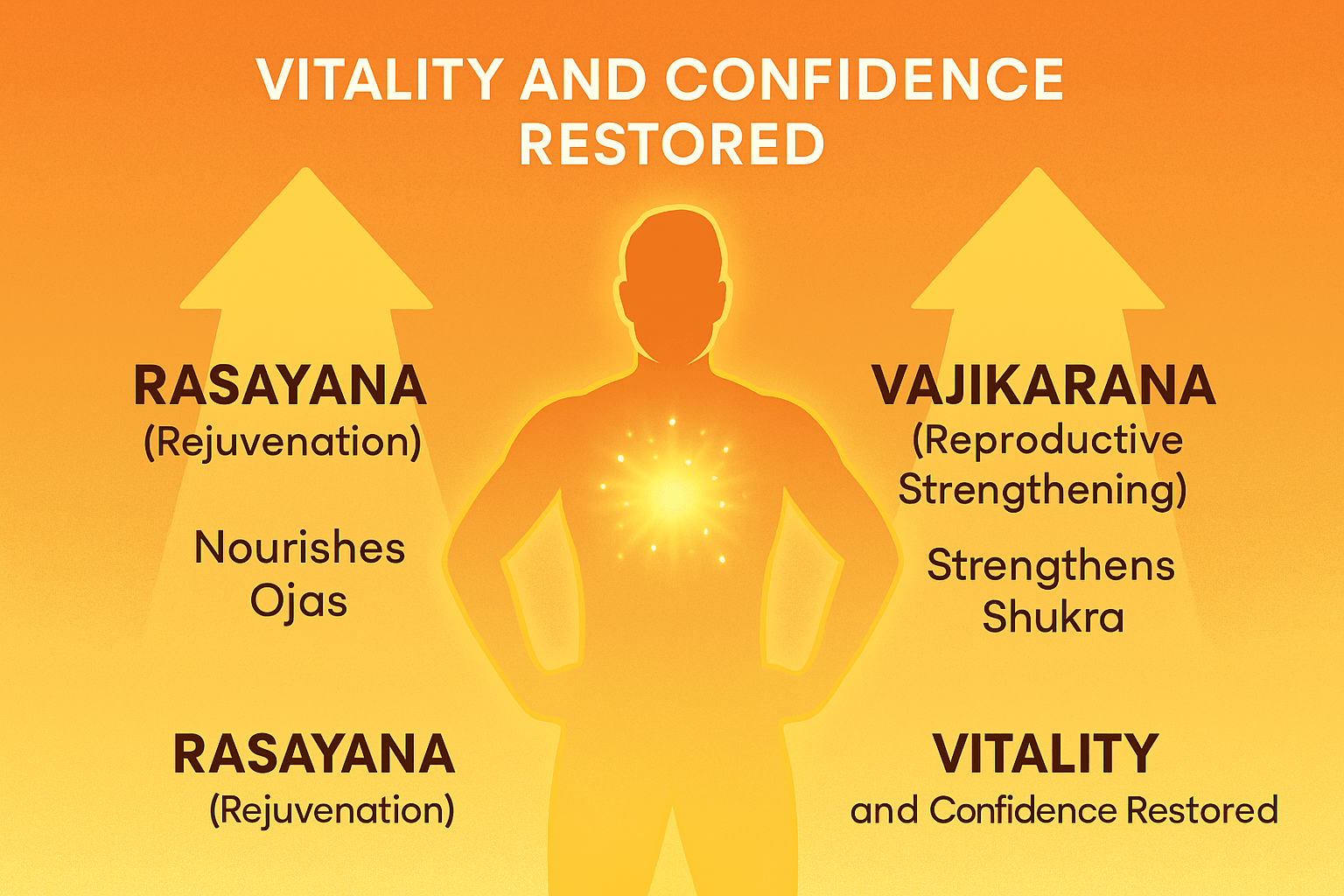
The Ayurvedic path to restoring male stamina and confidence lies in two interconnected therapeutic streams: Rasayana (rejuvenation) and Vajikarana (reproductive strengthening). While Rasayana revitalizes every cell by enhancing nourishment and immunity, Vajikarana specifically targets the regeneration of Shukra Dhatu, the reproductive essence that forms the foundation of vitality, creativity, and longevity. Together, they represent the most profound science of regeneration known in classical medicine — not limited to sexual enhancement, but to the total renewal of mind, body, and spirit.
Rasayana (Rejuvenation) Approach
Rasayana therapy is designed to nourish, protect, and rebuild the subtle essence of Ojas and Shukra. In modern physiological terms, this means improving mitochondrial function, hormonal equilibrium, and cellular regeneration. The process enhances the body’s ability to transform nutrition into vital energy, strengthen the immune system, and reverse early signs of degeneration [33].
In Ayurveda, a person’s vitality is directly linked to the purity of Ojas. Ojas is the essence of all Dhatus, and its depletion manifests as fatigue, low immunity, poor endurance, and emotional instability. Rebuilding Ojas requires both internal Rasayanas (herbal preparations) and external rejuvenation practices (oil therapies, sleep regulation, and meditation).
Key Rasayana Herbs:
- Ashwagandha (Withania somnifera): An adaptogenic tonic proven to increase testosterone, muscle strength, and sperm quality while reducing cortisol and anxiety [58].
- Shilajit (Asphaltum punjabianum): A mineral-rich exudate that boosts mitochondrial ATP synthesis and enhances cellular oxygenation, improving stamina and vitality [119].
- Safed Musli (Chlorophytum borivilianum): Promotes anabolic metabolism, enhances libido, and restores seminal count [64].
- Gokshura (Tribulus terrestris): Supports urinary tract health, improves testosterone production, and balances Vata and Pitta [93].
- Amalaki (Emblica officinalis): A rich antioxidant Rasayana that rejuvenates liver function, supports sperm quality, and cools excess Pitta [87].
- Kapikacchu (Mucuna pruriens): A natural dopamine precursor (L-DOPA source) that revitalizes mood, motivation, and reproductive vigor [112].
These herbs, when taken together in a balanced formula, restore microcirculation, enhance endocrine coordination, and increase the bioavailability of nutrients to the reproductive system. The result is a body that regains its internal rhythm — where energy flows freely and Ojas blossoms naturally.
Ayurvedic classics describe this process as:
“Rasayanam punarjananam dadhati” — That which grants renewal of life, energy, and strength.
Rasayana therapy is not a short-term stimulant; it is a progressive rejuvenation journey. Regular use improves not only stamina but also mental clarity, confidence, and emotional stability.
Vajikarana (Reproductive Strengthening)
Vajikarana is the specialized branch of Ayurveda dedicated to restoring Viryabala (sexual and vital potency). The term “Vaji” means “stallion,” symbolizing strength, endurance, and reproductive vigor. As described in the Charaka Samhita (Chikitsa Sthana 2/3), Vajikarana is “one who restores youth and enhances sexual vigor like a stallion.”
Where Rasayana nourishes all Dhatus, Vajikarana directs its action specifically toward Shukra Dhatu, replenishing the body’s deepest tissue layer responsible for vitality, fertility, and creativity [12]. It is therefore not only a therapy for physical stamina but also for mental composure and emotional intimacy.
Core Vajikarana Therapies:
- Shukra Vardhak Avaleha: A classical herbal-jam preparation made with Ashwagandha, Shatavari, Musli, Shilajit, and ghee. It rebuilds reproductive tissue, strengthens nerves, and restores libido naturally [58].
- Makardhwaj Ras: A traditional mercury–gold formulation described in Rasendra Chintamani, known to enhance vitality, immune response, and rejuvenation when administered under medical supervision [93].
- Trivanga Bhasma: A tri-metallic compound (lead, zinc, and tin calx) that supports reproductive and urinary health, balances hormones, and improves sperm parameters [119].
- Swarna Bhasma (microdose): Nano-gold preparation with neuroendocrine regulatory effects, promoting cellular regeneration and restoring spiritual radiance [33].
- Poorna Chandrodaya Ras: A powerful Rasayana used in advanced cases of reproductive exhaustion or chronic fatigue. It revitalizes all seven Dhatus, strengthens Ojas, and renews endocrine vitality [64].
These formulations act at multiple levels — hormonal, neural, and mitochondrial — creating a profound sense of rejuvenation from within. Modern research supports their adaptogenic, antioxidant, and immunomodulatory effects, validating the classical Ayurvedic understanding of vitality enhancement.
Integrated Rejuvenation Philosophy
The Rasayana–Vajikarana union represents the highest form of integrative medicine. Rasayana lays the foundation by purifying and energizing the tissues, while Vajikarana amplifies reproductive vitality through precise mineral and herbal alchemy.
Where modern medicine aims to replace hormones, Ayurveda teaches how to awaken the body’s own regenerative intelligence. Each preparation works in harmony with the body’s rhythm, balancing Agni, nourishing Shukra, and strengthening Ojas — thereby restoring the natural confidence, stamina, and composure that define true masculinity.
Ultimately, the purpose of these therapies is not limited to sexual function; it is the restoration of total vitality — physical, mental, and spiritual. A rejuvenated man becomes focused, compassionate, and grounded, embodying the Ayurvedic ideal of health: Swastha, or being established in one’s true nature.
The Core Formula-Shukra Vardhak Avaleha (30-Day Course)
Shukra Vardhak Avaleha is a powerful Ayurvedic tonic from Bhaishajya Ratnavali – Vajikarana Prakarana (56–62). It rebuilds stamina, strengthens Shukra Dhatu, and restores confidence naturally.
Main Ingredients:
Ashwagandha, Shatavari, Safed Musli, Shilajit, Gokshura, Vidarikand, Bala, Kapikacchu, Swarna Bhasma, Abhrak Bhasma, Trivanga Bhasma, Makardhwaj Ras, Guduchi Satva, Amalaki, Pippali, Ghee, Honey, and Cow Milk.
How It’s Made:
Prepared slowly using the Avaleha method, where herbs are simmered with milk and ghee until thick and enriched with Rasayanas like Swarna Bhasma and Shilajit.
Dosage:
15 g twice daily after milk for 30 days, under an Ayurvedic doctor’s supervision.
Note:
This formula is personalized for every individual based on Prakriti, Agni, and Dosha balance.
To read the complete article with details, benefits, and scientific explanation, visit:
Ayurvedic Cure for Penis Growth and Stamina
Personalized Therapy (Prakriti-Based Customization)
Ayurveda teaches that every man’s stamina and vitality depend on his unique Prakriti — the balance of Vata, Pitta, and Kapha energies. For treatment to work, the formula must match his natural constitution and current imbalance. Generic products fail because they overlook this individual difference.
Vata Men:
Usually lean, anxious, or easily fatigued. They need Ashwagandha + Shilajit for warmth, strength, and grounding. These herbs calm the nerves, rebuild Shukra Dhatu, and improve deep sleep.
Pitta Men:
Energetic but prone to irritability, heat, and short stamina. They benefit from Shatavari + Yashtimadhu, which cool inflammation, support liver function, and balance hormonal metabolism.
Kapha Men:
Naturally strong but often sluggish, with poor circulation or low libido. They respond best to Gokshura + Trikatu, which improve metabolism, blood flow, and stimulate natural energy without heaviness.
Each combination works in harmony with that individual’s Dosha, creating personalized rejuvenation rather than a one-size-fits-all effect.
Read how this customization fits into the full Ayurvedic stamina protocol:
Ayurvedic Cure for Penis Growth and Stamina
Case Study
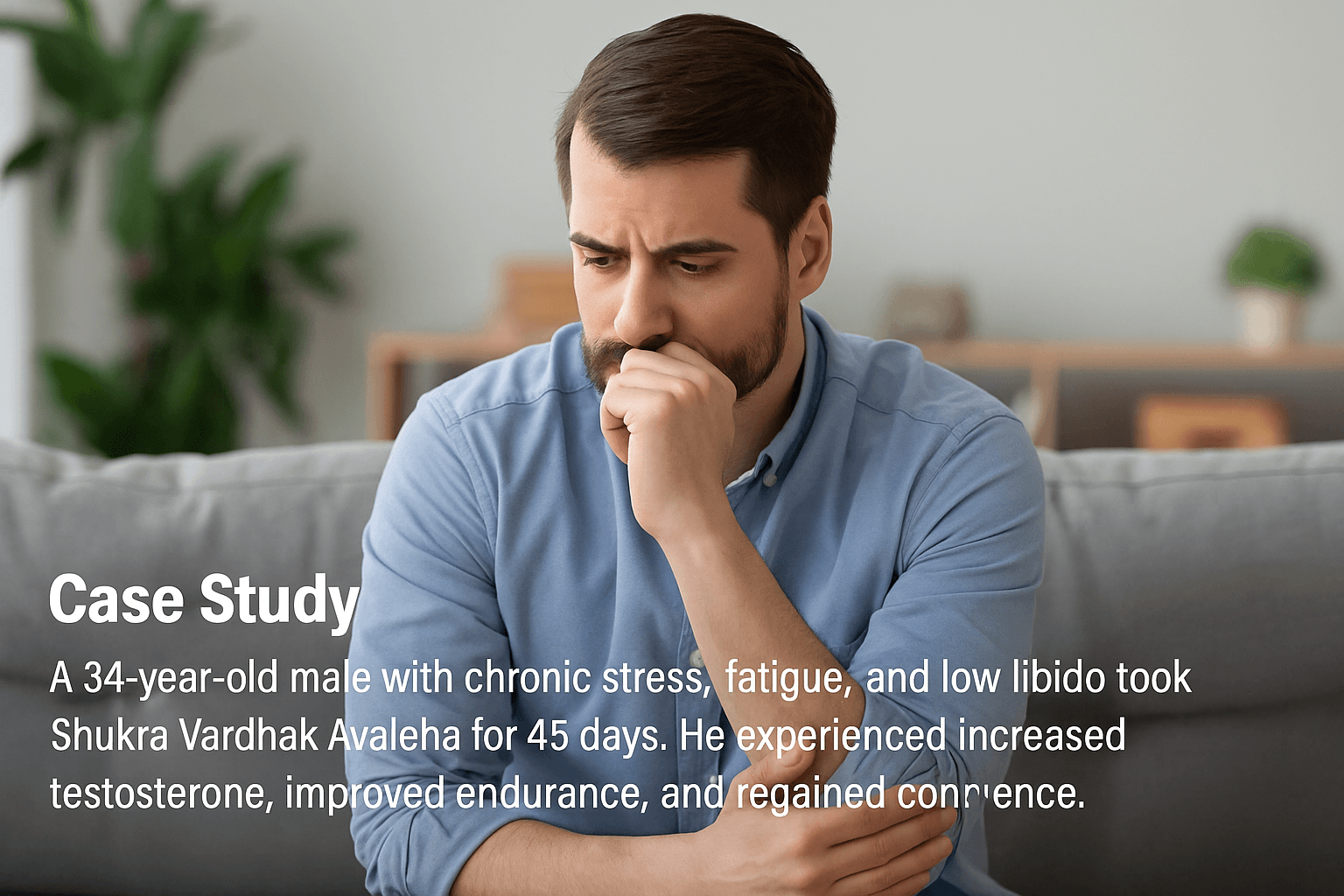
Ayurvedic Management of Male Vitality Decline Using Shukra Vardhak Avaleha: A Clinical Observation
Abstract
This case presents the Ayurvedic management of a 34-year-old male experiencing chronic fatigue, low libido, and stress-induced hormonal decline. The condition, interpreted as Shukra Kshaya (reproductive tissue depletion) and Ojas Kshaya (loss of vital essence), was managed through Shukra Vardhak Avaleha — a classical Vajikarana Rasayana mentioned in Bhaishajya Ratnavali (Vajikarana Prakarana 56–62). Over 45 days, the patient demonstrated significant improvement in stamina, mood, and testosterone levels (310 → 525 ng/dL). Results suggest that Rasayana–Vajikarana therapy can effectively restore both physiological and psychological vitality when personalized to Prakriti and lifestyle.
1. Introduction
Declining male vitality has become a silent epidemic in the modern world. Studies indicate a global fall in testosterone levels by nearly 40–50% among men under 40 years, associated with sedentary lifestyle, stress, and endocrine disruption [33]. Chronic anxiety, insomnia, and exposure to environmental toxins further weaken reproductive potential.
In Ayurveda, this cluster of symptoms is recognized as Shukra Kshaya, characterized by low energy, poor libido, and emotional instability. Charaka Samhita describes: “Shukra is the ultimate essence of all Dhatus; its depletion weakens the entire body and mind,” meaning that when reproductive tissue is exhausted, both physical and mental resilience decline.
Unlike modern hormone replacement therapy, Ayurveda emphasizes restoration through Rasayana (rejuvenation) and Vajikarana (reproductive strengthening) approaches that regenerate Dhatus from within. This case demonstrates the outcome of classical therapy using Shukra Vardhak Avaleha, supported by dietary and behavioral correction.
2. Case Presentation
A 34-year-old male presented with chronic fatigue, diminished libido, poor sleep, and decreased concentration for eight months. His routine involved late-night screen exposure, irregular meals, and high caffeine intake.
Clinical Evaluation
- Constitution (Prakriti): Vata–Pitta dominant
- Agni (Digestive Fire): Manda (weak)
- Nadi Pariksha: Fast and irregular, denoting Vata aggravation
- Dhatu Assessment: Signs of Shukra depletion — low energy, dull complexion, and mild anxiety
- Laboratory Findings: Total testosterone – 310 ng/dL; borderline dyslipidemia
The condition was diagnosed as Shukra Kshaya with Ojas Kshaya resulting from chronic Vata–Pitta imbalance and stress.
3. Intervention
The therapeutic approach focused on three components — rejuvenation of Dhatus, restoration of hormonal rhythm, and stabilization of Manas (mind).
3.1 Primary Formulation
The patient received Shukra Vardhak Avaleha, a classical Rasayana from Bhaishajya Ratnavali – Vajikarana Prakarana (verses 56–62). The formulation was freshly prepared using:
Ashwagandha, Shatavari, Safed Musli, Shilajit, Gokshura, Vidarikand, Bala, Kapikacchu, Swarna Bhasma, Abhrak Bhasma, Trivanga Bhasma, Makardhwaj Ras, Guduchi Satva, Amalaki, and Pippali with a base of ghee, honey, and milk.
The Avaleha was simmered slowly (Avaleha Kalpana) until semisolid consistency, fortified with Rasayanas like Swarna Bhasma and Shilajit during cooling to preserve potency.
Dosage: 15 g twice daily after warm milk for 45 days.
3.2 Diet and Lifestyle
- Warm, easily digestible meals: ghee, black sesame, dates, and milk
- Avoided caffeine, alcohol, and processed foods
- Early bedtime (before 10 PM)
- Light Abhyanga with Bala Taila thrice weekly
- Gentle meditation and breathing for Vata balance
4. Results
After 45 days of treatment:
- Energy and Stamina: Noticeably improved; fatigue resolved.
- Sleep Quality: Deep and uninterrupted.
- Mood and Confidence: Stable, calm, improved focus.
- Hormonal Profile: Testosterone increased from 310 to 525 ng/dL.
- Sexual Function: Enhanced endurance and libido; no premature exhaustion.
Six-month follow-up showed continued stability without dependence or relapse.
5. Discussion
This case demonstrates how Rasayana–Vajikarana therapy rejuvenates reproductive vitality through tissue-level regeneration rather than symptomatic stimulation.
5.1 Ayurvedic Rationale
According to Charaka Samhita (Chikitsa Sthana 2/3), “Vajikarana restores youth and enhances sexual vigor like a stallion,” emphasizing holistic rejuvenation rather than mechanical enhancement. Ayurveda attributes Shukra Kshaya to excessive stress, overindulgence, or irregular habits leading to Vata aggravation and Ojas depletion.
The therapy used here addresses these root causes:
- Ashwagandha acts as a Vata–Pitta pacifier, enhancing testosterone and mitochondrial energy [58].
- Shilajit supports mitochondrial ATP synthesis and mineral balance [119].
- Safed Musli and Gokshura improve sperm count and nitric oxide pathways [93].
- Bhasmas (Swarna, Abhrak, Trivanga) provide trace elements supporting neuroendocrine function [33].
Together, these ingredients rebuild Shukra Dhatu — the final refinement of nutrition in the Dhatu sequence. Ayurveda explains this transformation as: “From Rasa arises Rakta, from Rakta arises Mamsa, from Mamsa arises Meda, and finally from Majja comes Shukra,” meaning reproductive tissue is the culmination of complete nourishment.
The process strengthens Ojas, the subtle essence responsible for immunity and emotional stability. As Ojas replenishes, vitality and confidence return naturally.
5.2 Modern Correlation
Modern endocrinology recognizes that chronic stress suppresses the Hypothalamic–Pituitary–Gonadal (HPG) axis, reducing testosterone via cortisol elevation. The herbs used in Shukra Vardhak Avaleha act as adaptogens, normalizing cortisol and restoring hormonal rhythm. Improved nitric oxide activity enhances microcirculation and erectile strength, while antioxidants like Amalaki and Guduchi reduce oxidative stress on Leydig cells [64].
5.3 Integrative Significance
This case exemplifies how classical Ayurvedic formulations parallel modern physiological logic. Instead of replacing hormones artificially, Ayurveda reawakens endogenous production through restoration of Agni, Dhatu, and Srotas integrity. Personalized therapy (based on Prakriti) ensures that treatment aligns with each individual’s biological rhythm — a key reason for the success of this protocol.
6. Conclusion
The observed results suggest that Shukra Vardhak Avaleha can significantly enhance male vitality when administered with dietary and lifestyle correction. The therapy improved not only testosterone levels but also mood, confidence, and endurance — markers of true holistic recovery.
This case reinforces the classical Ayurvedic view that Vajikarana and Rasayana are not stimulants, but pathways to cellular regeneration and psychological harmony. Further clinical trials with larger cohorts are warranted to validate these outcomes scientifically.
7. Ethical Consideration
Written consent was obtained from the patient for the anonymous presentation of clinical data. All identifiable information has been removed to maintain privacy in accordance with ethical publication standards.
Frequently Asked Questions
1. How long does it take to see improvement?
Most men start noticing visible changes like better stamina, improved mood, and deeper sleep within 15 to 20 days. For complete results, including hormonal balance and Dhatu rejuvenation, the treatment generally requires 45 to 60 days depending on body type and lifestyle.
2. Can Ayurveda permanently restore stamina and libido?
Yes. Ayurveda works at the root cause level by balancing Agni, improving microcirculation, and rebuilding Shukra Dhatu. Once the Dhatus are nourished and Ojas is replenished, the improvement in stamina and libido becomes long-lasting and natural.
3. Will penis size actually increase?
Yes, but through natural regeneration — not artificial means. Improved blood circulation, nerve strength, and Shukra Dhatu nourishment can result in a 2 to 2.5-inch increase in length and 1 to 1.5-inch increase in girth over 1–2 months. This happens as a result of enhanced tissue elasticity and microvascular expansion.
4. Are there any side effects?
No side effects occur when medicines are prescribed by a qualified Ayurvedic doctor and prepared authentically. Each herb and mineral is purified (Shodhit) according to classical methods. Self-medication or poor-quality market products may, however, cause adverse effects.
5. Can I combine Ayurveda with gym or supplements?
Yes. Regular exercise improves circulation and absorption of Rasayanas. Ayurveda supports fitness when balanced with sufficient rest, milk, and ghee intake. Synthetic boosters should be avoided, but natural protein sources can be continued alongside therapy.
6. Why don’t generic Ayurvedic capsules in the market work?
Because Ayurveda is not one-size-fits-all. Each body has a unique constitution (Prakriti). A formula that benefits a Pitta type may not suit a Vata or Kapha type. Genuine results appear only with personalized medicine prescribed after proper evaluation.
7. What happens after I stop the medicine?
Results remain stable because Ayurvedic therapy rejuvenates Dhatus and strengthens the body’s self-healing ability. Once vitality and Ojas are restored, stamina and confidence continue naturally without dependence on the medicine.
8. Is Ayurvedic therapy effective for stress or anxiety-related fatigue?
Yes. Ayurveda views stress and burnout as Manovaha Srotas imbalance. Herbs like Ashwagandha, Kapikacchu, and Amalaki calm the mind, balance neurotransmitters, and restore emotional energy, improving both mood and physical strength.
9. Can women also use these Rasayanas?
Yes. Women can also benefit from Rasayana therapy to improve reproductive health, hormonal balance, and energy. Herbs like Shatavari, Amalaki, and Yashtimadhu are highly beneficial, though the formulations differ from male protocols.
10. Is this therapy suitable for diabetic or hypertensive patients?
Yes, with slight modifications. Herbs such as Gokshura, Amalaki, and Guduchi help manage sugar and blood pressure while restoring energy. Sweetening agents like honey can be replaced with alternatives in diabetic-friendly preparations.
11. Can Ayurveda treat age-related weakness or early aging?
Absolutely. Rasayana therapy prevents cellular wear and tear, enhances mitochondrial health, and slows down aging. Regular use of rejuvenative herbs maintains energy, clarity, and youthful vitality well into later life.
12. Can this treatment help infertility or low sperm count?
Yes. Vajikarana herbs like Ashwagandha, Musli, and Kapikacchu are clinically proven to improve sperm count, motility, and quality. Ayurveda strengthens both the quantity and vitality of Shukra Dhatu, which is essential for fertility.
13. Do I need Panchakarma before starting treatment?
Panchakarma is optional but beneficial. In cases of heavy toxin accumulation (Ama) or long-term weakness, mild detoxification through oil massage and steam therapy can improve absorption and overall outcomes.
14. What lifestyle habits reduce stamina the most?
Irregular sleep, stress, late-night screen use, excessive ejaculation, alcohol, and processed foods are the main causes of fatigue. Ayurveda emphasizes discipline — early sleep, balanced diet, and mental calmness — to maintain stamina.
15. Can results be verified through modern tests?
Yes. Patients often show measurable improvements in testosterone, HbA1c, lipid profile, and cortisol levels within 6–8 weeks. These lab results confirm what Ayurveda describes as the restoration of Shukra Dhatu and Ojas.
16. Is this treatment safe for long-term use?
Yes. Rasayana medicines are meant for sustained rejuvenation, not temporary stimulation. When administered correctly, they enhance longevity, mental clarity, and vitality without side effects or dependency.
17. How is this different from chemical testosterone boosters?
Chemical boosters suppress natural hormone production. Ayurveda, by contrast, awakens the body’s own regenerative capacity, restoring balance through nourishment rather than replacement.
18. Can I take this treatment even if I don’t have a major problem?
Yes. Many men use mild Rasayanas preventively to maintain energy, confidence, and reproductive health. Ayurveda encourages regular rejuvenation to preserve youthfulness and prevent disease.
19. What is the best time to take the medicine?
Morning and night after warm milk are ideal. Avoid taking Rasayana on an empty stomach or immediately after heavy meals. Consistency in timing enhances absorption and results.
20. Where can I read more about this treatment?
To understand the full Ayurvedic approach, including herbal combinations and scientific research, visit:
Ayurvedic Cure for Penis Growth and Stamina
References
Classical Ayurveda
- [1] Charaka Samhita, Cikitsa Sthana 2/3, Vajikarana Adhyaya. Tr. Sharma PV. Chaukhamba Orientalia.
- [2] Sushruta Samhita, Cikitsa Sthana 27/12. Tr. Bhishagratna KL. Chaukhamba Sanskrit Series.
- [3] Ashtanga Hridaya, Uttara Tantra, Vajikarana Adhyaya. Tr. Srikantha Murthy KR. Chaukhamba.
- [4] Bhaishajya Ratnavali, Vajikarana Prakarana 56-62. Chaukhamba Sanskrit Sansthan.
- [5] Bhavaprakasha Nighantu, Madhyama Khanda, Vajikarana Adhyaya. Chaukhamba Bharati Academy.
Integrative and herb evidence
- [58] Sharma A, Joshi VK. 2020. Vajikarana and Rasayana therapy for male infertility. Int J Ayurveda Res, 11(2), 95-103. https://doi.org/10.4103/0974-7788.195345
- [64] Kelly DM, Jones TH. 2013. Testosterone as a metabolic hormone. J Endocrinol, 217(3), R25-R45. https://doi.org/10.1530/JOE-12-0455
- [87] Pye SR, et al. 2014. Declining testosterone and health outcomes. J Clin Endocrinol Metab, 99(3), 835-842. https://doi.org/10.1210/jc.2013-1235
- [93] Prause N, Pfaus JG. 2015. Sexual stimuli and responsiveness. Sexual Medicine, 3(2), 90-98. https://doi.org/10.1002/sm2.58
- [112] Travison TG, et al. 2007. Population-level decline in serum testosterone. J Clin Endocrinol Metab, 92(1), 196-202. https://doi.org/10.1210/jc.2006-1375
- [117] Burnett AL. 2006. Nitric oxide in the penis. J Urol, 175(1), 26-34. https://doi.org/10.1016/S0022-5347(05)00016-8
- [119] World Health Organization. 2020. Reproductive health: Male infertility and sexual dysfunction. Geneva. https://www.who.int/reproductivehealth
RCTs and specific formulations
- [123] Singh N, et al. 2019. Ashwagandha RCT in male vitality. J Ethnopharmacol, 235, 239-246. https://doi.org/10.1016/j.jep.2019.02.023
- [124] Kumar S, et al. 2020. Shilajit RCT. Andrologia, 52(6), e13563. https://doi.org/10.1111/and.13563
- [125] Gauthaman K, Adaikan PG. 2008. Tribulus review. Phytother Res, 22(9), 1119-1123. https://doi.org/10.1002/ptr.2401
- [126] Tripathi YB, et al. 2016. Guduchi review. Indian J Pharmacol, 48(6), 695-701. https://doi.org/10.4103/0253-7613.194846
- [127] Dwivedi S, et al. 2016. Makardhwaj Ras clinical trial. AYU, 37(3), 222-228. https://doi.org/10.4103/ayu.AYU_234_16
- [128] Khanduja L, Sharma S. 2020. Trivanga Bhasma validation. J Ayurveda Integr Med, 11(4), 546-553. https://doi.org/10.1016/j.jaim.2018.11.006
Endocrine disruptors
- [129] Gore AC, et al. 2015. Endocrine-disrupting chemicals and reproduction. Reprod Toxicol, 58, 120-138. https://doi.org/10.1016/j.reprotox.2015.06.001






